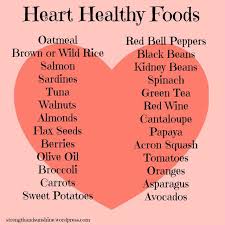
Recently Diagnosed or Relapsed? Stop Looking For a Miracle Cure, and Use Evidence-Based Therapies To Enhance Your Treatment and Prolong Your Remission
Multiple Myeloma an incurable disease, but I have spent the last 25 years in remission using a blend of conventional oncology and evidence-based nutrition, supplementation, and lifestyle therapies from peer-reviewed studies that your oncologist probably hasn't told you about.
Click the orange button to the right to learn more about what you can start doing today.
- You are here:
- Home »
- Blog »
- Multiple Myeloma »
- Cancer-Related Fatigue in Multiple Myeloma
Cancer-Related Fatigue in Multiple Myeloma

“(Cancer-related fatigue) occurs (in MM) due to various reasons, such as patient-related factors, treatment-related factors, inflammatory cytokines, and metabolic and/or endocrine dysregulation.”
Cancer-related fatigue (CRF) is yet another common side effect in multiple myeloma (MM) survivors that conventional oncology knows little about. CRF, as a side effect of aggressive toxicity, is in good company.
Twenty years ago, chemobrain, also a common side effect of aggressive treatment, according to your oncologist, was either blamed on your MM itself, or was all in your imagination or if it was real, your chemobrain would heal in a few months after treatment concluded.
I underwent several years of conventional therapies for my MM in ’95,’96 and ’97. Like most of my other long-term side effects, my CTF has improved since 1997, but my energy is nothing like it was before my aggressive chemotherapy regimens.
Okay, the bad news is that most if not all MM survivors are affected by CRF. The good news is that therapies designed to manage our CRF are the same therapies that can help minimize our other long-term side effects. FYI, I posted the picture of a yoga pose to reinforce the benefit of stretching/breathing/yoga for chronic pain. Even low level chronic pain will sap you energy.
Moderate, frequent exercise, nutrition, supplementation, sleep, mind-body health, even the same brain games that I have blogged about to heal my chemobrain also help me feal more energetic.
The bottom line? It’s all about a healthy lifestyle post active MM therapy. To learn more about evidence-based, non-toxic MM therapies that can help you manage both your MM as well as your CRF, scroll down the page, post a question or comment and I will reply to you ASAP.
Hang in there,
David Emerson
- MM Survivor
- MM Cancer Coach
- Director PeopleBeatingCancer
Recommended Reading:
- Your Multiple Myeloma Oncologist- 5 Rules – Cancer Coaching 101
- Mind-Body Therapy for the Multiple Myeloma Survivor
- A Long-term Multiple Myeloma Survivor’s Diet, Nutrition Plan-
Cancer-Related Fatigue May Be a Major Symptom in Multiple Myeloma
“Cancer-relate fatigue may occur more often in patients with multiple myeloma who report with lower functional levels or performance scores, according to study results published in the International Journal of Hematology.
In addition, its incidence may predict poorer survival outcomes among new-diagnosed patients.
“Cancer-related fatigue is one of the common non-hematological adverse events in patients with malignancies and affects quality of life negatively,” the researchers wrote. “(Cancer-related fatigue) occurs due to various reasons, such as patient-related factors, treatment-related factors, inflammatory cytokines, and metabolic and/or endocrine dysregulation.”
Post-Cancer Fatigue: The Invisible Wound
“What Harpham calls “life-altering” fatigue continued as she went in and out of treatment until 2007, when she went into remission. “Since I have been in the latest remarkable durable remission of 10-plus years, my fatigue has lessened but still impacts my daily life,” she says.
A COMMON SIDE EFFECT
Fatigue ranks as perhaps the most prevalent of cancer complaints — studies over the past two decades have confirmed it as a significant problem during and for some years after treatment ends for 75 to 100 percent of survivors — yet its physiologic causes remain unknown.
Researchers now focus on confirming its prevalence and identifying ways to improve quality of life for those battling fatigue.
For example, researchers found that survivors over 65 — some of whom had been treated decades earlier — reported more fatigue after treadmill tests and walked slower than participants who had never had cancer…
Although cancer treatment aims at survival, the longterm effects of fatigue on health and quality of life must be examined more fully, says the study’s senior researcher, Jennifer A. Schrack, Ph.D…
“I think seeing how prevalent fatigue is, how long it can last and how much it can interfere with people’s daily lives — and the fact that no one knows how to prevent it or treat it very well — is what motivated me to look into it,” Barton says. “What I understand from the evidence is that there are many different reasons why people have long-term fatigue, most of which we still do not understand, despite all the years of research.”
Cancer-related fatigue (CRF) is the medical term used in the oncology community. It creates further questions regarding how it differs from normal fatigue, says Barton. “When I present to colleagues and talk about CRF,” she says, “they ask, ‘What exactly does it mean? Are we talking about treatment-related fatigue, or are we talking about fatigue from the cancer itself?’”
The answer that has emerged defines CRF as fatigue that is out of the ordinary, not the kind from jet lag or a poor night’s sleep or being up with a newborn and not relieved by sleep or rest. “It is (defined) by ruling out other issues,” Barton says, “but it seems to be an experience that many, many survivors talk about.”
Patients’ descriptions of CRF range from lacking the energy to stand up from a chair after watching television to never regaining former levels, even three years after treatment.
COPING WITH LIFE-ALTERING FATIGUE
Harpham first noticed the extent of her fatigue during interferon therapy in 1992.
“I am someone who likes to go, go, go,” Harpham says. “For years my fatigue was one of the greatest challenges of survivorship…”
Cognitive problems exacerbated her fatigue. “I made mistakes (that) embarrassed me and threatened my sense of self, causing practical problems for me and others, such as when I would forget to do something I had promised to do,” Harpham says. “This increased my overall stress. The fact that I couldn’t trust myself to do simple things correctly, such as run errands or go to a meeting, made every day filled with fear of goofing up.”
When she began to explore her fatigue, Harpham considered two components: the practical medical issues and the emotional aspects. She worked with her physicians to minimize any treatable causes, such as having her thyroid checked annually because she had a history of thyroid disease and had received radiation to the neck in 1992.
She had periodic blood work to identify anemia or kidney and liver problems, she says, adding that she developed immunodeficiency that will continue for the rest of her life. Some lifestyle changes have also helped Harpham minimize fatigue. Large meals make her tired, so she eats small, healthy meals and snacks. She works out — but stops before the activity leads to fatigue.
At the beginning of her treatment, Harpham saw a sleep specialist to help identify factors that were keeping her from restful sleep, such as chronic leg pain, stress and sleep-disturbing medication. A new mattress eased her leg pain; practicing good sleep hygiene, such as avoiding stimulants close to bed and exercising, and meditating helped reduce stress; and, when necessary, she took prescribed sleep medication.
Harpham accepts that casual acquaintances and friends can’t comprehend her fatigue. It’s more important that close friends and family understand her condition, she says, so they can work together to develop a coping system. For example, she says, when she declines requests, those close to her understand, and she doesn’t feel bad about saying no.
When Harpham gave up her medical practice, she turned to writing for survivors and the medical community, addressing issues such as living with cancer and parenting after the disease. “Writing books and articles takes little physical energy and is one-way communication, so it doesn’t demand social skills or short-term memory the way a workplace with people interactions does,” she says. “My writing is still challenging and stimulating without overtaxing me.”
UNDERSTANDING FATIGUE
Many factors cause fatigue, including anemia, thyroid problems, stress, deconditioning, dehydration, sleep disturbances, diet, depression, metabolic abnormalities and cardiac function, according to Barton. They can overlap, as Harpham experienced, with some factors being physical and others psychological. But because patients self-report — often without using a particular language, as Harpham described — it is difficult to determine the underlying causes…
Significant evidence links physical activity with reduced fatigue — and yoga may be even more effective than traditional exercise. Researchers from the University of Rochester Medical Center in New York found that cancer survivors who practiced yoga as part of their exercise program felt less fatigued. Specifically, they slept less but experienced less fatigue and cut down on daytime napping. The ultimate result of the study was a 37 percent reduction in what the researchers termed “daytime dysfunction.”
Another study, Yoga for Cancer Survivors, looked at the impact of a four-week yoga class for women over 60 who had CRF. The results revealed that the participants experienced significantly less cancer-related, physical and mental fatigue.
Pharmacologic solutions to fatigue include several drugs that have shown efficacy, but none has been singled out as a one-size-fits-all solution. Barton has been studying the use of American ginseng, a natural energy booster in traditional Chinese medicine. “Fatigue has been linked to an increase in the immune system’s inflammatory cytokines and to poorly regulated levels of the stress hormone cortisol,” she says. “Ginseng’s active ingredients, called ginsenosides, have been shown in animal studies to reduce cytokines related to inflammation and to help regulate cortisol levels.”
One challenge, she says, is that the ginseng must be pure, ground American ginseng root, not the off-the-shelf kind consumers generally purchase, Barton says. Common ginseng, she says, is sometimes processed using ethanol, which can produce estrogen-like properties that may be harmful to patients with breast cancer. Barton used ginseng from Wisconsin after working with the Ginseng Board of Wisconsin to guarantee purity.
The results of a Mayo Clinic Cancer Center-led study showed taking 2,000 milligrams of ginseng, in capsule form, daily for eight weeks led to a significant improvement in general exhaustion. “After eight weeks, we saw a 20-point improvement in fatigue in patients with cancer measured on a 100-point, standardized fatigue scale,” Barton says. She plans to examine the herb’s effects on specific biomarkers for fatigue, hoping to find a way to help the body through treatment and prevent long-term fatigue…
Today, Harpham says, she accepts her limits but still hopes for improvement. “I avoid the things that make it worse, such as overdoing, and I never take chances when the consequences matter, like driving when I am too tired or making important decisions.”
She is more forgiving of herself, too. “I still don’t like it, but I pay as little attention to it as possible,” she says. “I rarely talk about it, because focusing on it is a downer. I focus on all I can do and all the blessings in my life.”



